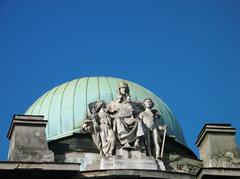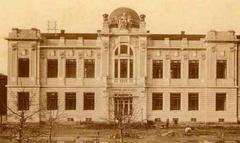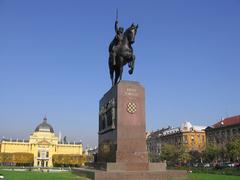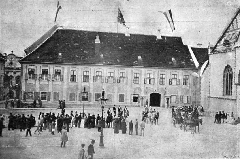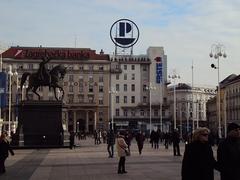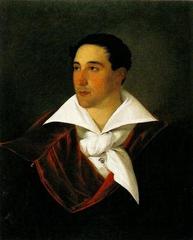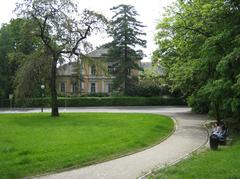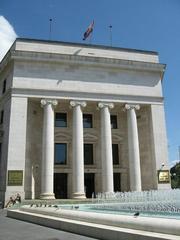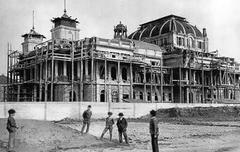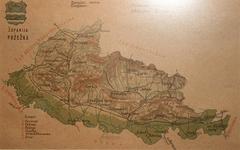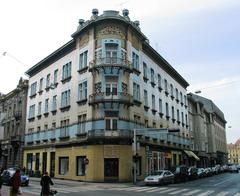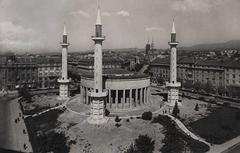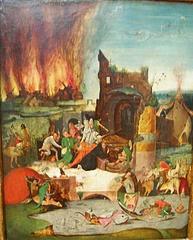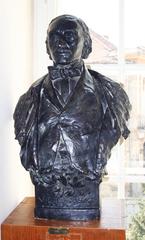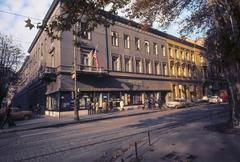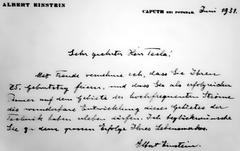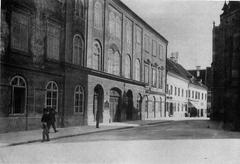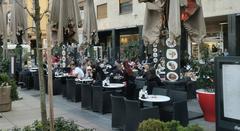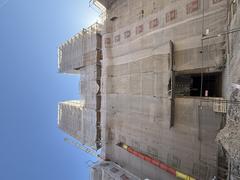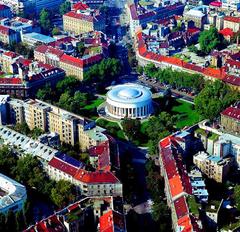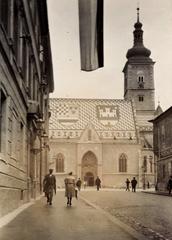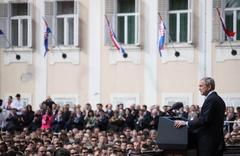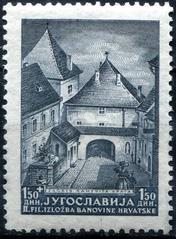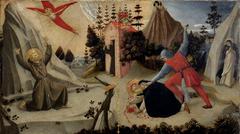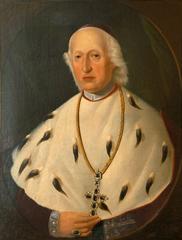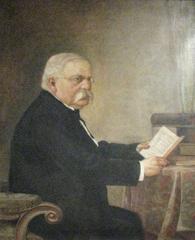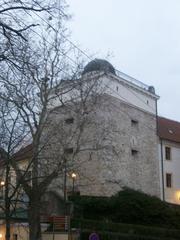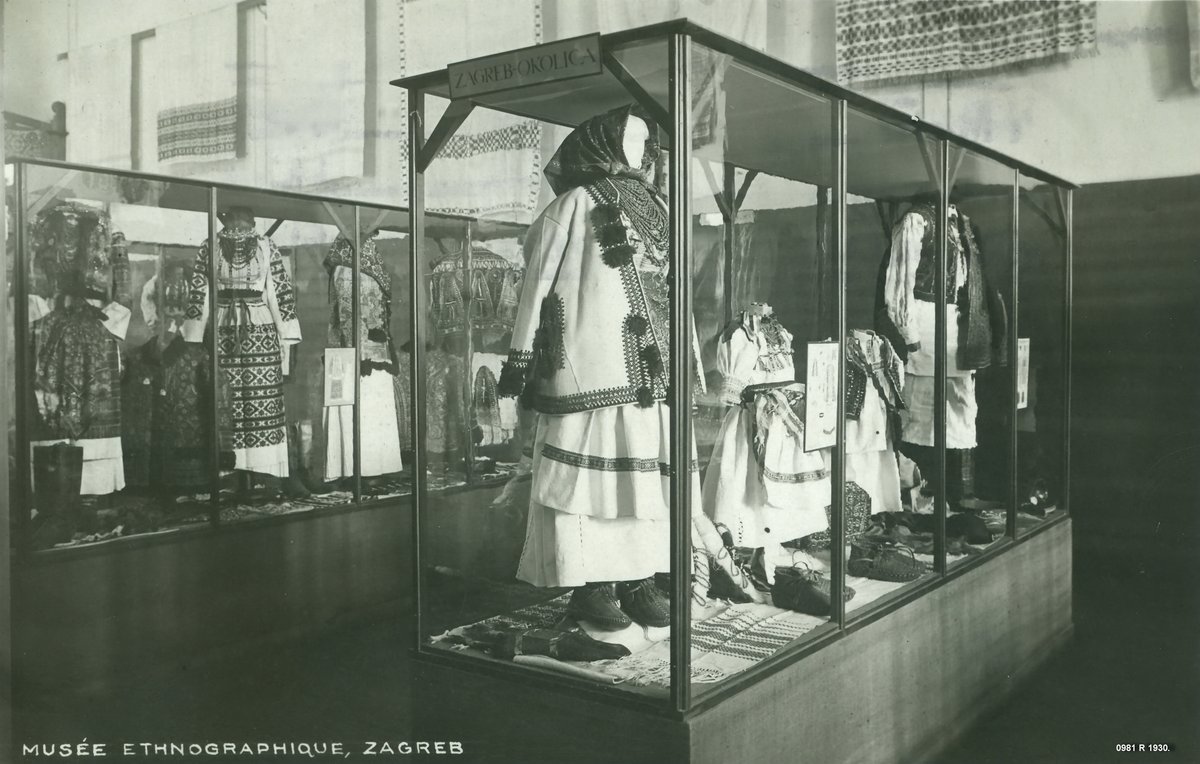
Ethnographic Museum Zagreb Visiting Hours, Tickets, and Travel Guide
Date: 14/06/2025
Introduction
Nestled in the heart of Zagreb, Croatia, the Ethnographic Museum is a cornerstone of the city’s cultural landscape. Founded in 1919 by Salamon Berger, the museum was envisioned as a guardian of Croatia’s rural traditions and everyday life at a time of social change. Housed in a magnificent Secession-style (Art Nouveau) building designed by Vjekoslav Bastl, the museum today preserves over 85,000 artifacts ranging from folk costumes and textiles to ritual objects and crafts, and features significant collections from Europe, Africa, Asia, and the Americas (Ethnographic Museum Zagreb: Visiting Hours, Tickets, and Historical Insights; Ethnographic Museum of Zagreb: Your Guide to Visiting Hours, Tickets, and Exhibitions). The museum’s central location, just steps from other major Zagreb attractions, makes it a must-visit for anyone interested in Croatian heritage.
This detailed guide covers the museum’s historical context, architectural highlights, collection themes, practical visitor information, and recommendations to help you plan your visit. Whether you are a history buff, culture lover, or family traveler, the Ethnographic Museum of Zagreb promises a memorable and educational experience.
Table of Contents
- Founding and Historical Development
- Architectural Significance
- Collections and Exhibitions
- Visitor Information
- Accessibility and Amenities
- Travel Tips
- Special Events and Educational Programs
- Nearby Attractions
- Frequently Asked Questions (FAQ)
- Conclusion and Recommendations
- References
Founding and Historical Development
The Ethnographic Museum of Zagreb was established in 1919, spearheaded by Salamon Berger, an industrialist and collector passionate about preserving Croatia’s rural traditions during a period of rapid modernization. Initially based on Berger’s private collection, the museum expanded its holdings through fieldwork, donations, and acquisitions, growing into a major repository of Croatian and international ethnographic artifacts (Ethnographic Museum Zagreb: Visiting Hours, Tickets, and Historical Insights).
The museum’s scope has evolved from documenting rural life and peasant culture to embracing urban ethnography, intangible cultural heritage, and contemporary social practices. This adaptive approach ensures continued relevance as Croatian society changes.
Architectural Significance
The museum is housed at Trg Antuna, Ivana i Vladimira Mažuranića 14, in a renowned Secession-style building completed in 1903 as the Trades Hall (Obrtni dom) and re-purposed for museum use in 1919. Designed by Vjekoslav Bastl, the building is a masterpiece of Art Nouveau architecture, with features that include:
- Exterior: Ornamental stucco, flowing Art Nouveau motifs, large arched windows, and sculptural details by Rudolf Valdec symbolizing the unity of craft and art.
- Interior: Grand staircase, parquet flooring, decorative ceilings, and original wrought-iron work. The main exhibition spaces are spread across two floors, housing permanent and temporary displays (Ethnographic Museum of Zagreb Visiting Hours, Tickets & Tips).
Collections and Exhibitions
Permanent Collections
The museum’s collection is one of Croatia’s most comprehensive, divided into several thematic categories:
- Traditional Costumes and Textiles: An extensive array of Croatian folk costumes, including Slavonian gold-embroidered dresses, Dalmatian lace, Istrian wool garments, and colorful accessories from Zagorje.
- Household Objects and Furniture: Reconstructed rural and urban interiors, featuring traditional furniture, pottery, tools, and cooking implements.
- Ritual Objects and Festive Items: Wedding attire, masks, musical instruments, and decorations associated with festivals and rituals.
- Non-European Artifacts: Objects from Africa, Asia, Oceania, and the Americas, highlighting global cultural diversity and the museum’s commitment to intercultural understanding (Ethnographic Museum of Zagreb: Your Guide to Visiting, Exhibits, and Cultural Insights; Hotel Dubrovnik).
Temporary and Special Exhibitions
The museum regularly hosts temporary exhibitions and international collaborations, featuring themes such as contemporary craft revival, oral histories, and global folk traditions. Recent renovations post-2020 earthquake have modernized exhibition spaces and increased the emphasis on interactive and digital displays.
Interactive and Family-Friendly Features
Hands-on exhibits, audio-visual materials, activity booklets for children, and occasional workshops make the museum engaging for families and young visitors (visitor insights).
Visitor Information
Opening Hours
- Tuesday–Sunday: 10:00 AM – 6:00 PM
- Closed: Mondays and major public holidays
- Last entry: 30 minutes before closing
Ticket Prices
- Adults: 40 HRK (approx. €5.30)
- Students/Seniors: 25 HRK (approx. €3.30)
- Children under 7: Free
- Family ticket: 90 HRK (2 adults + up to 3 children)
- Group rate: 30 HRK per person (for groups of 10+)
- Discounts available for Zagreb Card holders (Zagreb Card info)
Tickets can be purchased at the entrance or online via the official website.
Location & Getting There
Located at Trg Mažuranića 14, the museum is easily reached by tram (lines 2, 4, 6, 9, 13) or on foot from Ban Jelačić Square. Limited street parking is available, but public transport is recommended.
Accessibility and Amenities
The museum is committed to welcoming all visitors. Key features include:
- Ramps and elevators for wheelchair access (some areas may present challenges due to the historic architecture)
- Accessible restrooms on each floor
- Bilingual signage (Croatian and English) and large-print guides
- Service animal friendly
- Free Wi-Fi throughout the museum
- Cloakroom and free lockers
- Museum shop with books, crafts, and souvenirs
Staff are trained to assist visitors with special needs. For more specific accessibility details, contact the museum in advance.
Travel Tips
- Visit on weekday mornings or late afternoons to avoid crowds.
- Combine your visit with nearby sites such as the Croatian National Theatre, Mimara Museum, and the Botanical Garden.
- Download offline maps (e.g., Maps.Me) for easy city navigation (source).
- Use the Zagreb Card for free transport and attraction discounts.
- Photography is allowed (no flash).
- Guided tours and audio guides are available in multiple languages for a small fee (arrange in advance for groups).
Special Events and Educational Programs
The museum offers a robust program of workshops, lectures, and family events focused on Croatian customs, crafts, and seasonal festivals. It participates in city-wide cultural events like the Night of Museums and collaborates with schools and universities to foster cultural education.
Temporary exhibitions and international partnerships, such as recent displays on Japanese kimono culture and African beadwork, expand the museum’s global reach.
Nearby Attractions
Enhance your visit by exploring these nearby cultural sites:
- Croatian National Theatre: Architectural gem and leading performance venue.
- Ban Jelačić Square: Zagreb’s lively main square.
- Zrinjevac Park: A peaceful green oasis.
- Museum of Contemporary Art: Modern and contemporary works from Croatia and beyond.
Frequently Asked Questions (FAQ)
Q: What are the Ethnographic Museum Zagreb visiting hours?
A: Tuesday to Sunday, 10:00 AM–6:00 PM; closed on Mondays.
Q: How much are tickets?
A: General admission is 40 HRK (approx. €5.30), with reduced rates for students, seniors, groups, and families.
Q: Is the museum accessible for visitors with disabilities?
A: Yes, ramps and elevators are available, though some areas may be less accessible due to the historic building.
Q: Are guided tours available?
A: Yes, guided tours and audio guides are offered; book in advance for groups.
Q: Can I buy tickets online?
A: Yes, via the museum’s official website.
Q: Is the museum suitable for children?
A: Absolutely—interactive exhibits and workshops cater to young visitors.
Q: Are there discounts available?
A: Yes, for Zagreb Card holders, students, seniors, families, and groups.
Conclusion and Recommendations
The Ethnographic Museum of Zagreb is a vibrant center of Croatian cultural heritage. Its rich collections, educational programming, and beautiful Art Nouveau building provide a unique window into the traditions, customs, and artistic expressions of Croatia and the wider world. With affordable ticket prices, central location, and commitment to accessibility, the museum is ideal for tourists, families, and locals alike.
Before your visit, check the official website for the latest information on exhibitions and events. Download the Audiala app for audio guides and updates, and consider combining your trip with nearby Zagreb attractions for a fuller cultural experience.
Immerse yourself in Croatia’s living traditions—plan your visit to the Ethnographic Museum of Zagreb today.
References
- Ethnographic Museum Zagreb: Visiting Hours, Tickets, and Historical Insights
- Ethnographic Museum of Zagreb: Visiting Hours, Tickets, Collections, and Exhibitions Guide
- Ethnographic Museum of Zagreb Visiting Hours, Tickets & Tips: Your Guide to Zagreb Historical Sites
- Ethnographic Museum of Zagreb: Your Guide to Visiting, Exhibits, and Cultural Insights
- Visitor Insights
- Zagreb Card Information
- GPSmyCity: Ethnographic Museum

